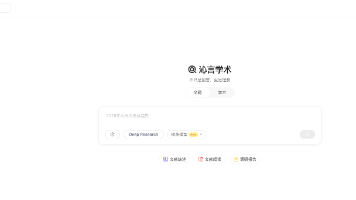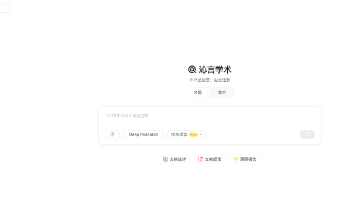Swagger2接口文档返回json、map等对象的介绍说明出参
·
一、遇到问题
目前使用Swagger2形成接口文档时,当系统设计的接口返回的类型不是实体对象时,Swagger2无法在接口文档页面中显示返回结果字段说明,比如返回json、map等可以存储key-val形式的类型;均无法在接口文档页面上显示返回的字段备注说明,所以怎么才能像实体对象一样显示正常的model字段说明是我们这次需要解决的问题;
二、实现思路
1、首先告诉Swagger2该接口需要返回的字段具体有哪些
定义两个注解,方便来定义返回json或者map的固定参数;如:
/**
* @ClassName: ApiReturnJson
* @Description: 返回对象的定义 (描述这个类的作用)
* @author TangCai
* @date 2019年2月22日 下午4:56:33
*/
@Target({ElementType.PARAMETER, ElementType.FIELD, ElementType.METHOD})
@Retention(RetentionPolicy.RUNTIME)
public @interface ApiReturnJson {
String key(); //对象名称
ApiReturnJsonPro[] value(); //对象属性值
}/**
* @ClassName: ApiReturnJsonPro
* @Description: 每一个字段的定义备注说明 (描述这个类的作用)
* @author TangCai
* @date 2019年2月22日 下午4:57:09
*/
@Target(ElementType.METHOD)
@Retention(RetentionPolicy.RUNTIME)
public @interface ApiReturnJsonPro {
String key(); //key
String example() default "";
Class<?> dataType() default String.class;
String description() default "";
}
2、在Swagger2中将该字段封装成一个model存进Swagger2容器中,继承OperationModelsProviderPlugin类,实现如下方法:
public void apply(RequestMappingContext context) {
// TODO Auto-generated method stub
if (context.getReturnType().isInstanceOf(Map.class)) {
// 根据参数上的ApiJsonObject注解中的参数动态生成Class
Optional<ApiReturnJson> optional = context.findAnnotation(ApiReturnJson.class);
ApiReturnJsonPro[] properties = null;
String name = null;
try {
Method method = Swagger2.class.getMethod("restApi");//系统默认取该处的全局变量
ApiReturnJson apiReturnJson = method.getAnnotation(ApiReturnJson.class);
name = apiReturnJson.key()+"_"+context.getName();
ApiReturnJsonPro[] properties0 = apiReturnJson.value();
if (optional.isPresent()) {
name = optional.get().key(); // model名称
ApiReturnJsonPro[] properties1 = optional.get().value();
properties = new ApiReturnJsonPro[properties1.length+properties0.length];
int k=0;
for(;k<properties0.length;k++) properties[k] = properties0[k];
for(int p=0;p<properties1.length;p++) properties[k+p] = properties1[p];
}
else properties = properties0;
} catch (Exception e) {
e.printStackTrace();
}
ResolvedType rt = typeResolver.resolve(createRefModel(properties, name));
// 像documentContext的Models中添加我们新生成的Class
context.getDocumentationContext().getAdditionalModels().add(rt);
context.operationModelsBuilder().addReturn(rt).build();
}
}
3、然后在每一个生成的接口在BuilderPlugin进行解析,并将访问正常的model更新,将json、map等替换,继承OperationBuilderPlugin类,实现如下方法:
public void apply(OperationContext operationContext) {
// TODO Auto-generated method stub
if(operationContext.getReturnType().isInstanceOf(Map.class)) {
//根据参数上的ApiJsonObject注解中的参数动态生成Class
Optional<ApiReturnJson> optional = operationContext.findAnnotation(ApiReturnJson.class);
try {
Method method = Swagger2.class.getMethod("restApi");//系统默认取该处的全局变量
ApiReturnJson apiReturnJson = method.getAnnotation(ApiReturnJson.class);
String name = apiReturnJson.key()+"_"+operationContext.getName();
if (optional.isPresent())
name = optional.get().key(); //model 名称
Set<ResponseMessage> set = new HashSet<ResponseMessage>();
ModelRef mr = new ModelRef(name);
set.add(new ResponseMessage(200,"返回json用例说明",mr,null,null));
operationContext.operationBuilder().responseMessages(set);
} catch (Exception e) {
e.printStackTrace();
}
}
}
三、运行结果
注解样式:
@ApiOperation(value = "获取上传文件表单name值")
@ApiImplicitParams({
@ApiImplicitParam(paramType="query", name = "uploadFileType", value = "上传文件类型:saveHeadImg", required = true, dataType = "string",defaultValue="")
})
@ApiReturnJson(key = "getUploadFileUrl_api", value = {
@ApiReturnJsonPro(key = "uploadFileNamesVal", description = "上传文件表单name值")
})
@GetMapping("/getUploadFileUrl")
@ResponseBody
public Result getUploadFileUrl(@RequestParam(required=true)String uploadFileType) {
AssertUtil.assertNotFalse(MyConstants.CONFIG.UPLOAD_FILE_TYPES.containsKey(uploadFileType), MyConstants.RESULT.FI1000, "uploadFileType非法");
String res = HttpUtil.httpGet(MyConstants.CONFIG.GET(SysParamKey.FILE_SYSTEM_AUTH_CODE_URL).toString());
Result result = (Result) JSONObject.toBean(JSONObject.fromObject(res), Result.class);
result.put("uploadFileNamesVal", MyConstants.CONFIG.UPLOAD_FILE_TYPES.get(uploadFileType));
return result;
}接口页面结果:

更多推荐
 已为社区贡献7条内容
已为社区贡献7条内容










所有评论(0)